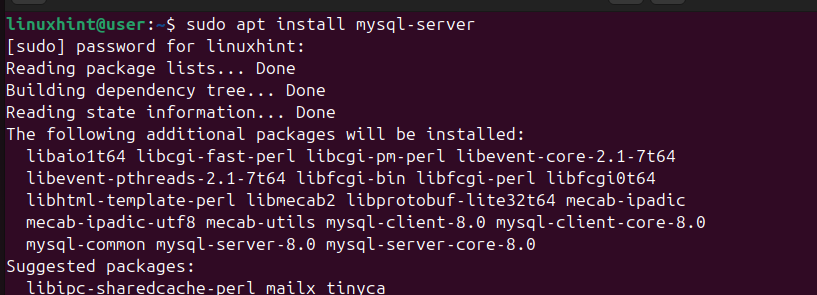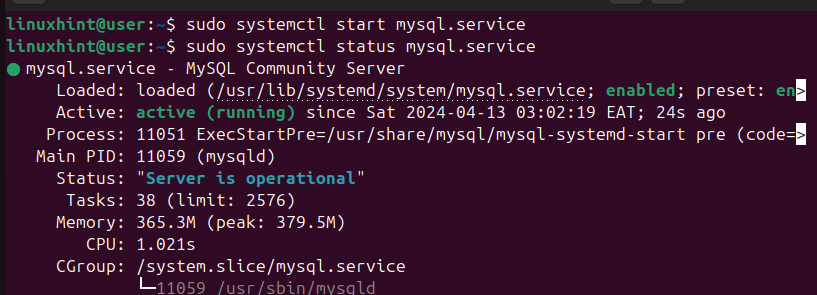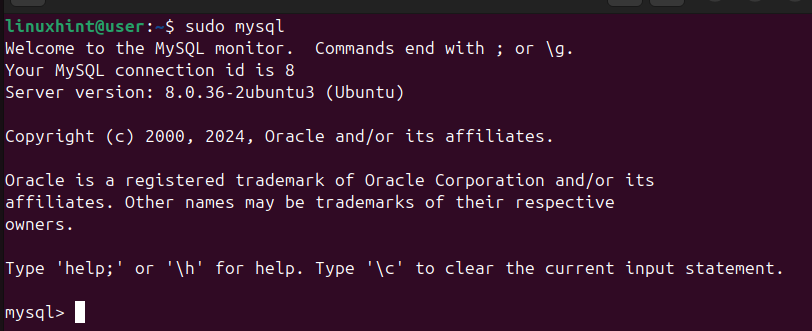MySQL is a dependable and extensively utilized DBMS that makes use of SQL and a relational version to handle data. MySQL is mounted as part of LAMP in Linux, but you can install it separately.Even in Ubuntu 24 04, setting up MySQL is straightforward. This overview details the actions to adhere to. Continue reading!
Step-By-Step Guide to Install MySQL on Ubuntu 24 04
If you have a user account on your Ubuntu 24 04 and have sudo advantages, setting up MySQL needs you to follow the procedure listed below.
Step 1: Update the System’s Repository
When installing plans on Ubuntu, you ought to upgrade the system’s database to rejuvenate the resources list. Doing so makes certain the MySQL bundle you set up is the most recent secure variation.

Step 2: Set Up MySQL Web Server
As soon as the plan index updates, the next step is to mount the MySQL web server plan making use of the below command.
$ sudo appropriate mount mysql – web server


After the installment, start the MySQL service on your Ubuntu 24 04
$ sudo systemctl begin mysql. solution


Step 3: Configure MySQL
Prior to we can begin collaborating with MySQL, we need to make a number of configurations. First, access the MySQL covering utilizing the command below.


When the shell opens, established a password for your ‘root’ utilizing the below phrase structure.
ALTER INDIVIDUAL ‘root’@’localhost’ IDENTIFIED WITH mysql_native_password BY ‘your_password’ ;
We’ve additionally defined to use the mysql_native_password verification method.


Leave the MySQL covering.


Step 4: Run the MySQL Script
One fascinating function of MySQL is that it offers a script that you need to run to promptly set it up. The script motivates you to specify various settings based on your choice. For example, you will certainly be prompted to establish a password for the origin customer. Experience each timely and respond as necessary.
$ sudo mysql_secure_installation


Action 5: Modify the Authentication Technique
After effectively running the MySQL installation manuscript, you must transform the authentication technique and established it to utilize the auth_socket plugin.
Start by accessing your MySQL shell using the root account.


Once visited, run the listed below command to change the verification plugin.
CHANGE CUSTOMER ‘root’@’localhost’ understood auth_socket ;


Action 6: Create a MySQL Customer
Until now, we have just access to MySQL using the origin account. We must develop a new customer and specify what privileges they ought to have. When producing a new user, you have to add their username and the login password using the phrase structure listed below.
create individual ‘username’@’localhost’ IDENTIFIED BY ‘password’ ;


Since the user is produced, we need to specify what opportunities the individual has when making use of MySQL. For instance, you can give them advantages, such as CREATE, ALTER, and so on, on a certain or all the databases.
Below’s an example where we’ve defined a few opportunities to the included user on all offered databases. Feel free to define whichever opportunities are excellent for your individual.
GRANT CREATE , CHANGE , PUT , UPDATE , SELECT on * * TO ‘username’@’localhost’ WITH GRANT OPTION ;


For the brand-new customer and the opportunities to use, purge the benefits and leave MySQL.


Step 7: Confirm the Developed Customer
As the last action, we ought to validate that our individual can access the data source and has the defined advantages. Begin by inspecting the MySQL service to guarantee it is running.
$ sudo systemctl status mysql


Next, access MySQL using the qualifications of the individual you included the previous action.


An effective login validates that you have actually successfully mounted MySQL, configured it, and added a new individual.
Conclusion
MySQL is a relational DBMS widely used for different functions. It supports SQL in taking care of data, and this article talks about all the steps you should follow to mount it on Ubuntu 24 04 Hopefully, you’ve installed MySQL on your Ubuntu 24 04 with the aid of the covered steps.



